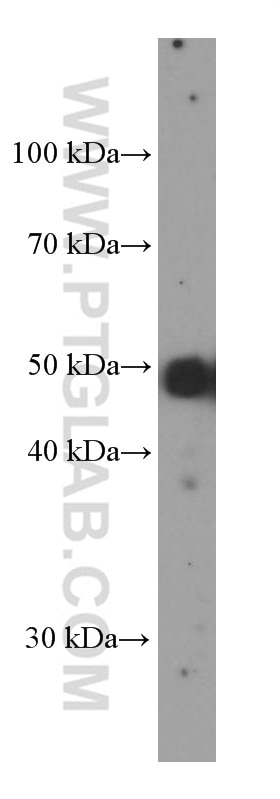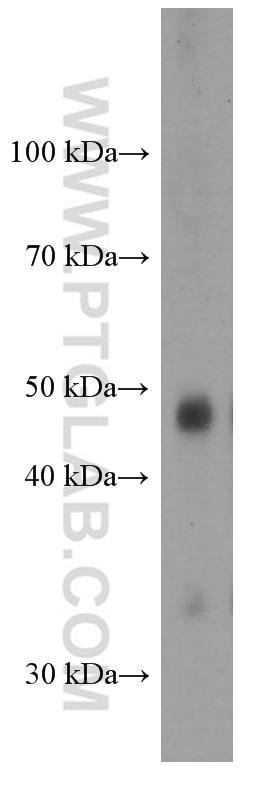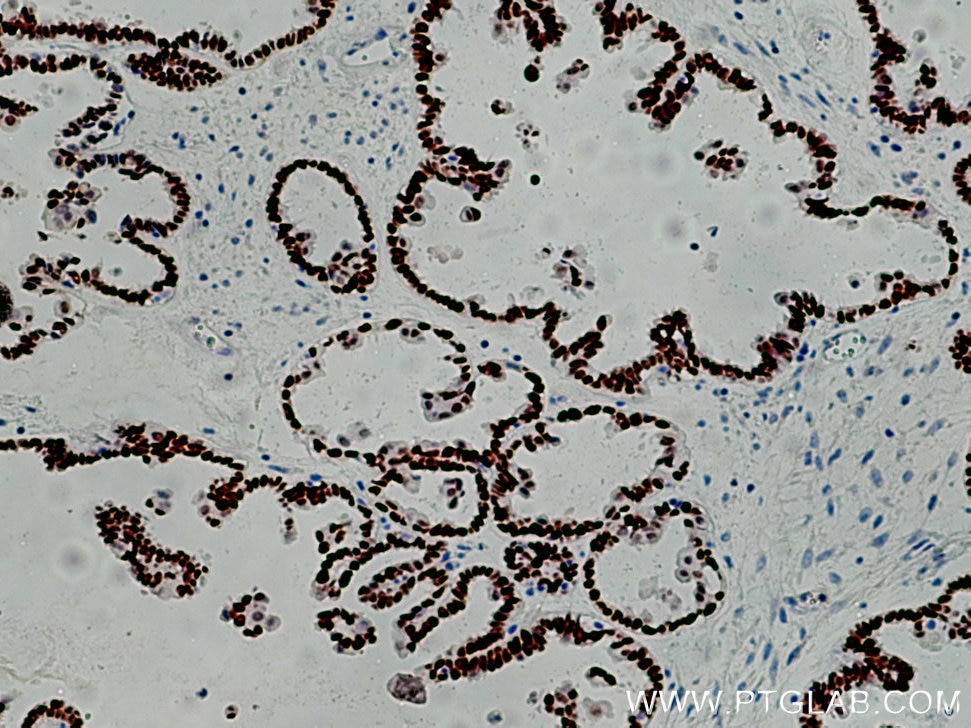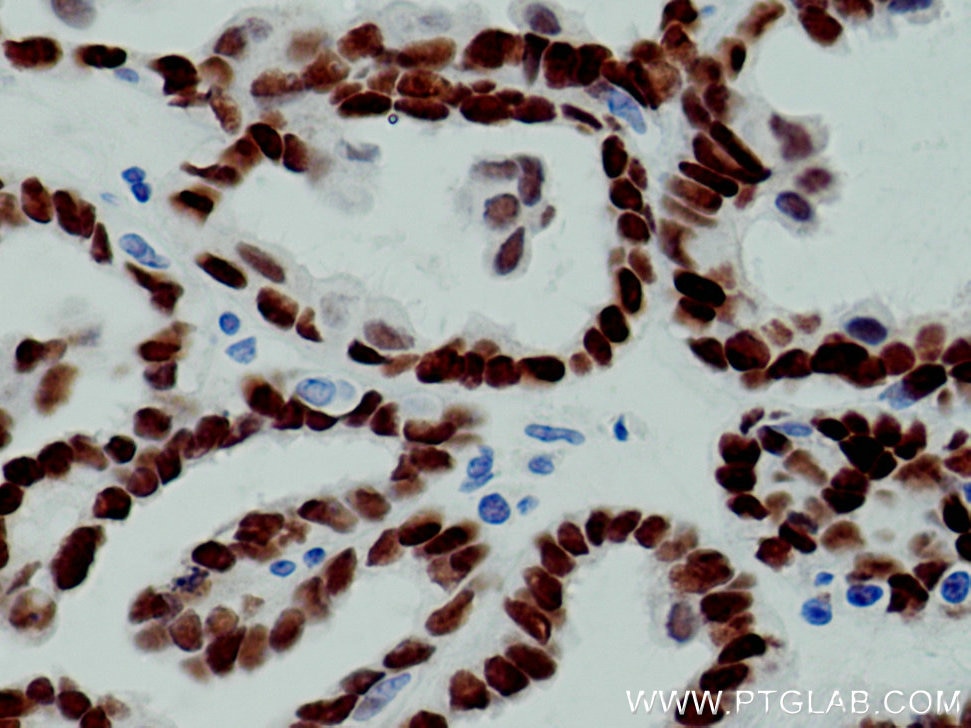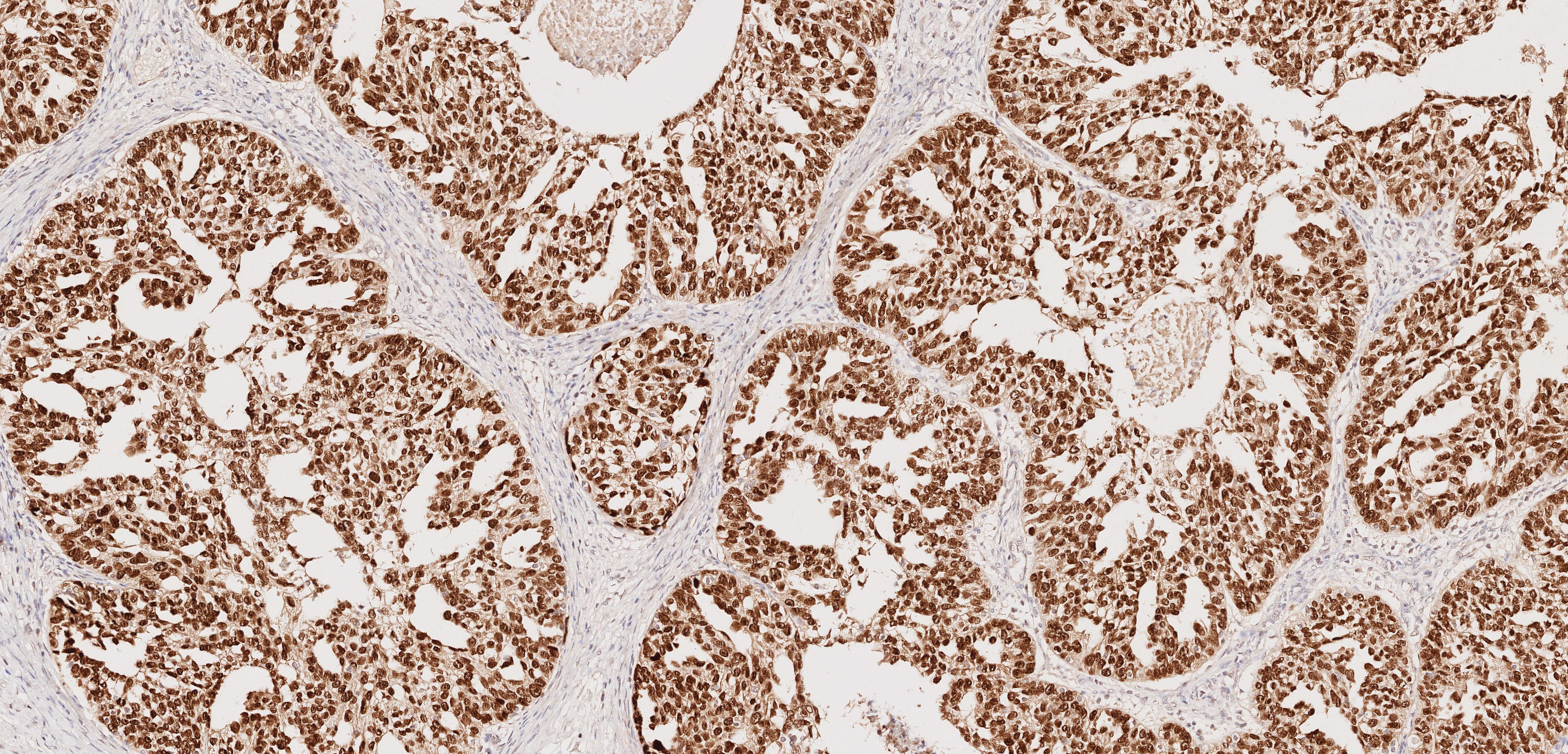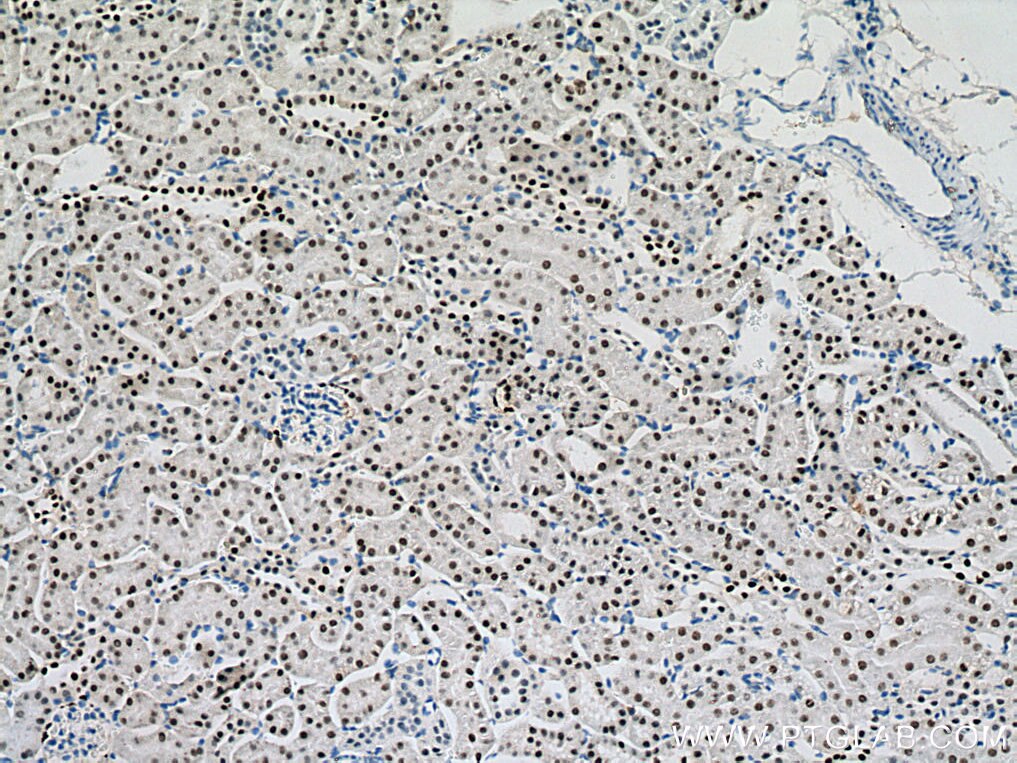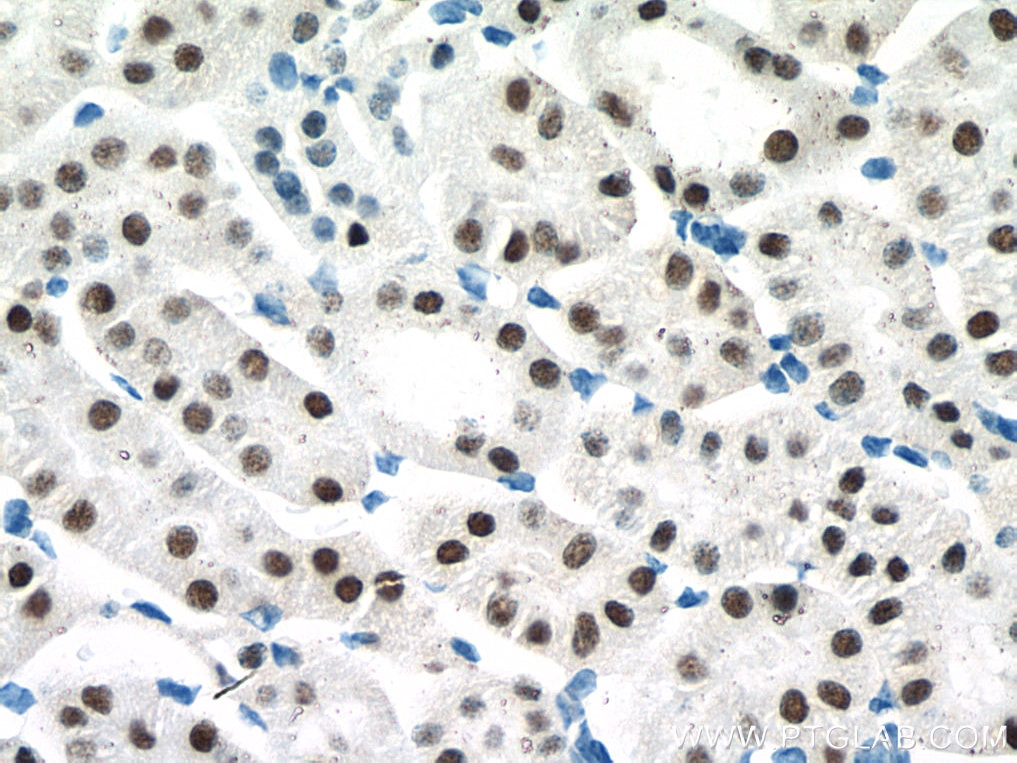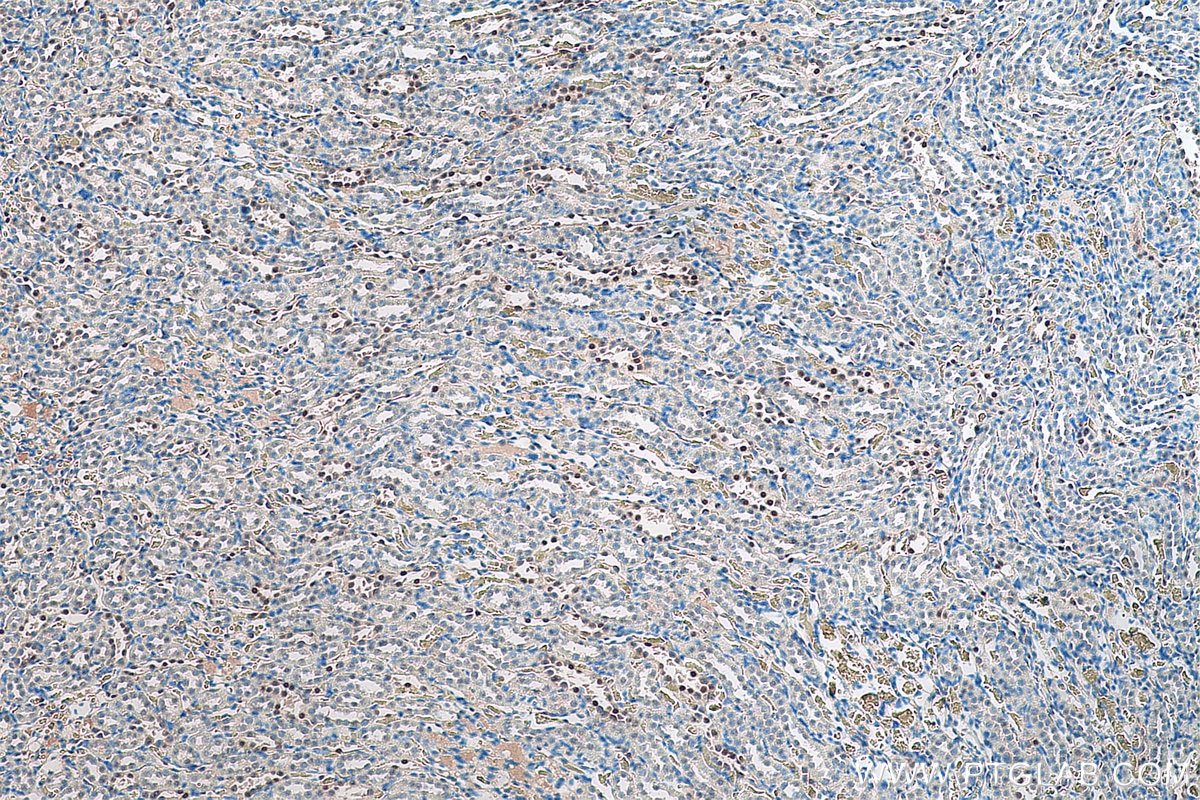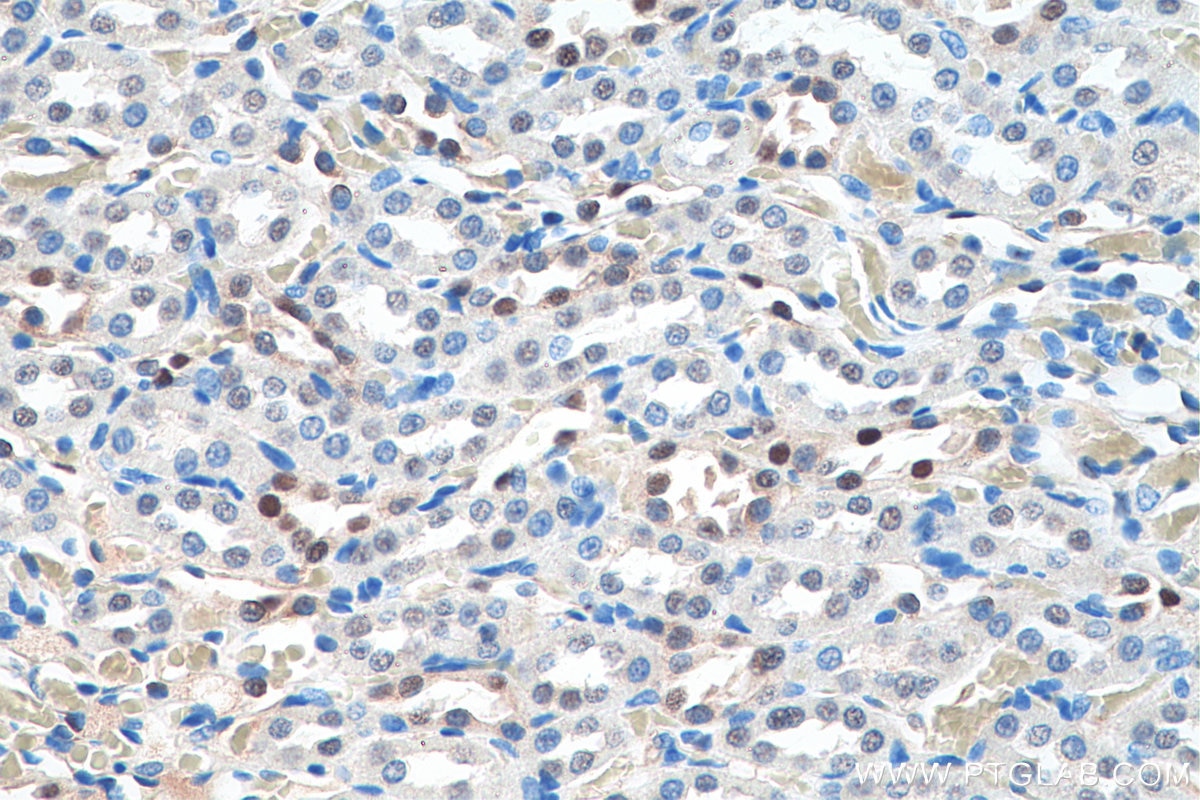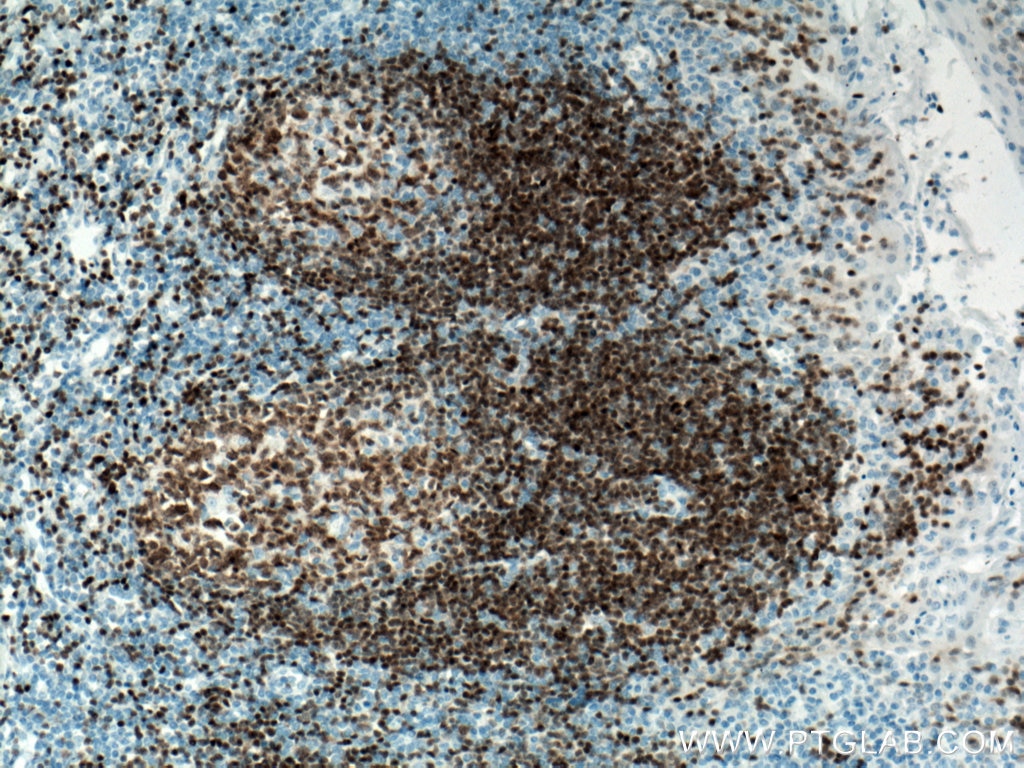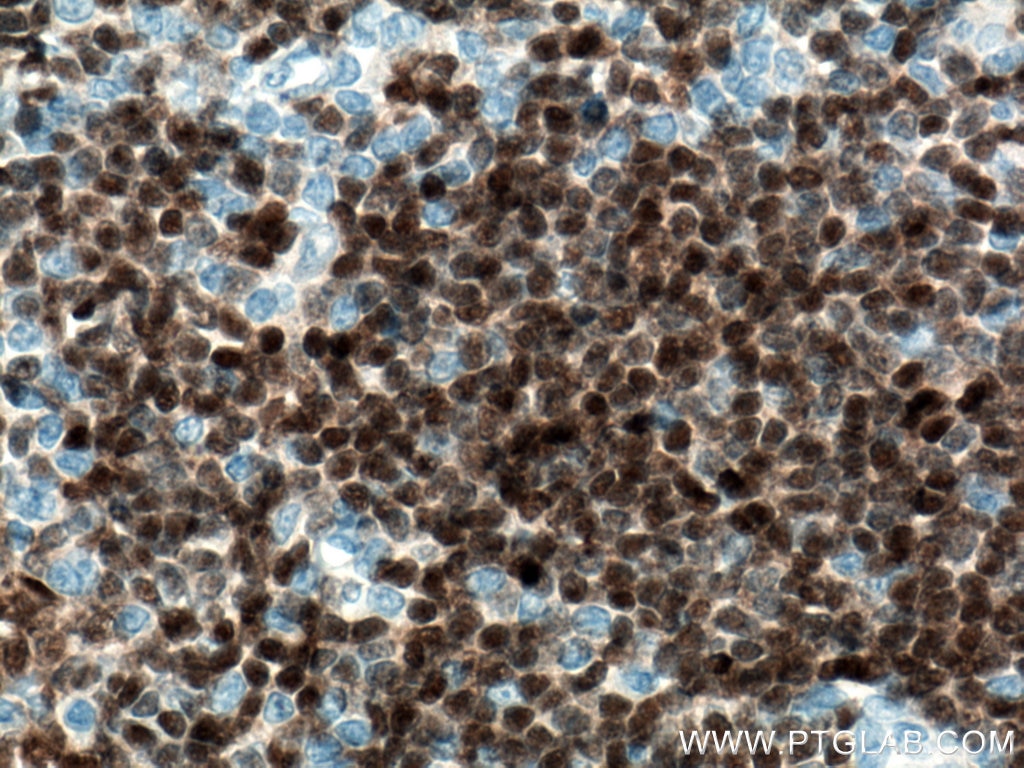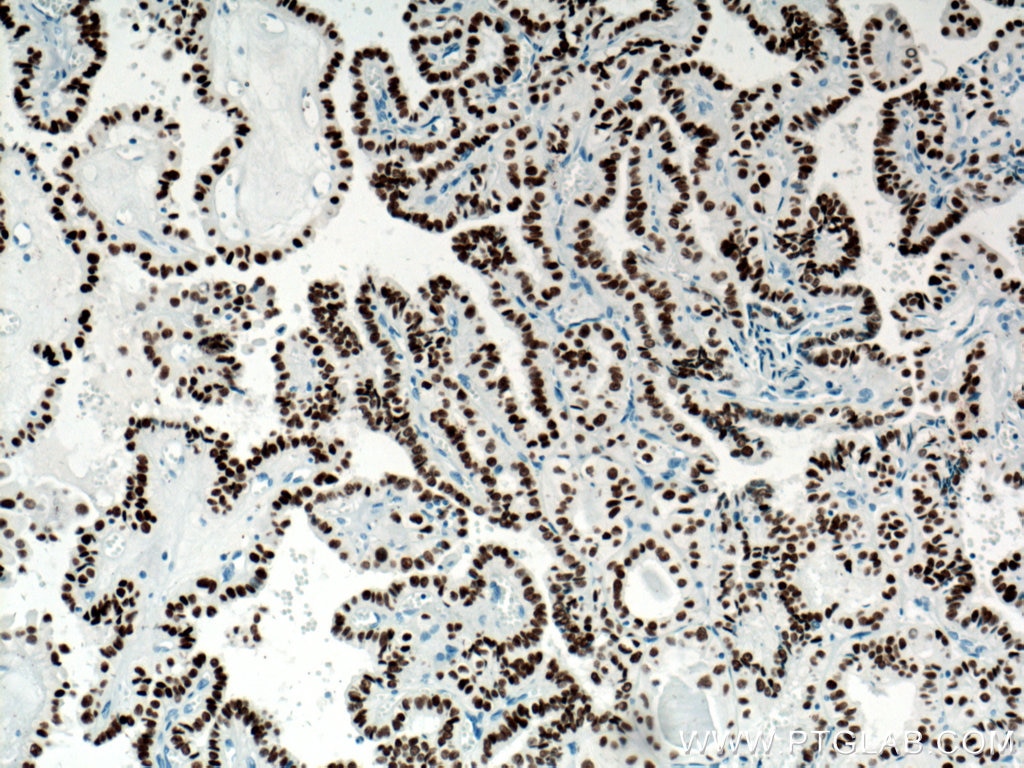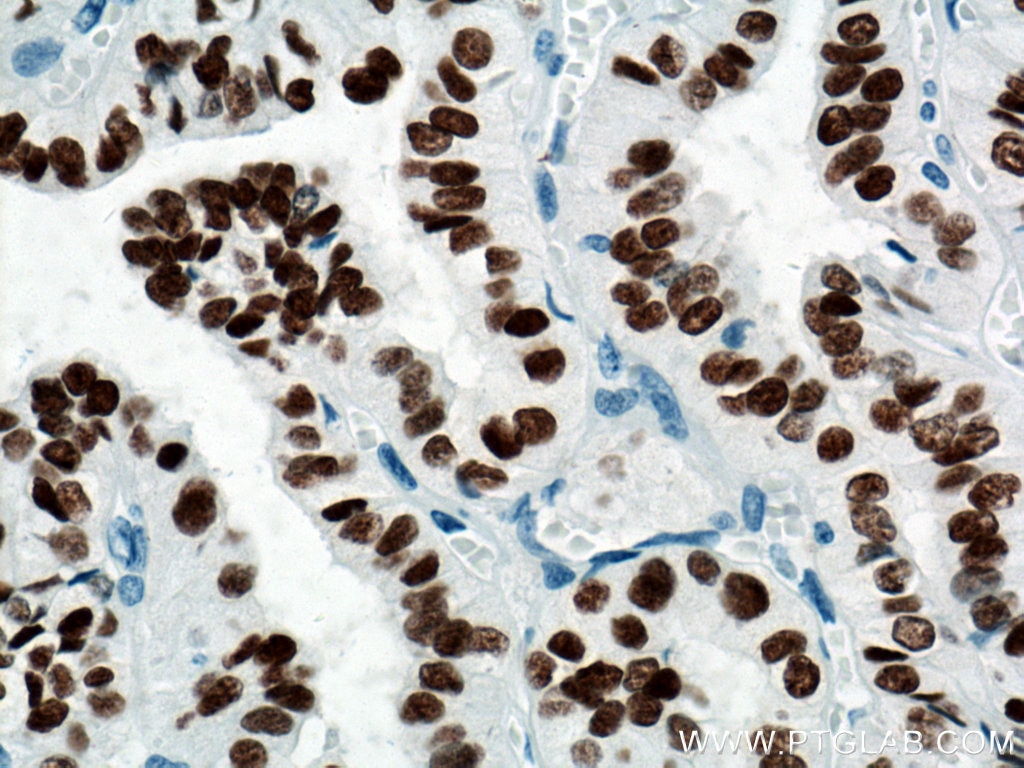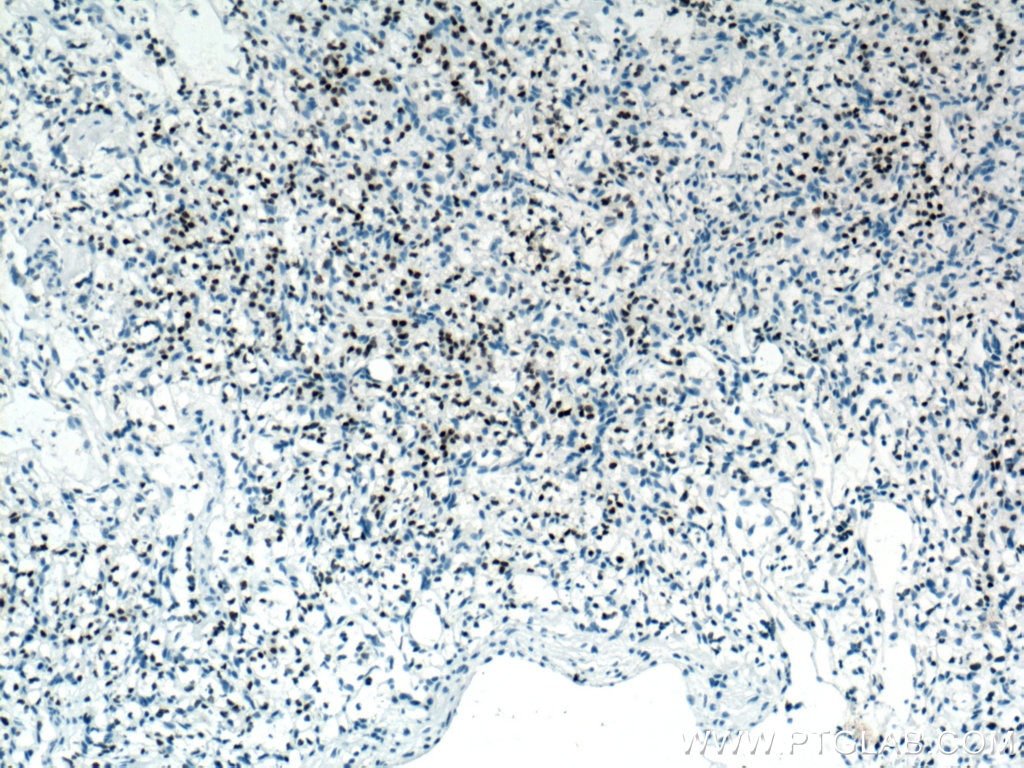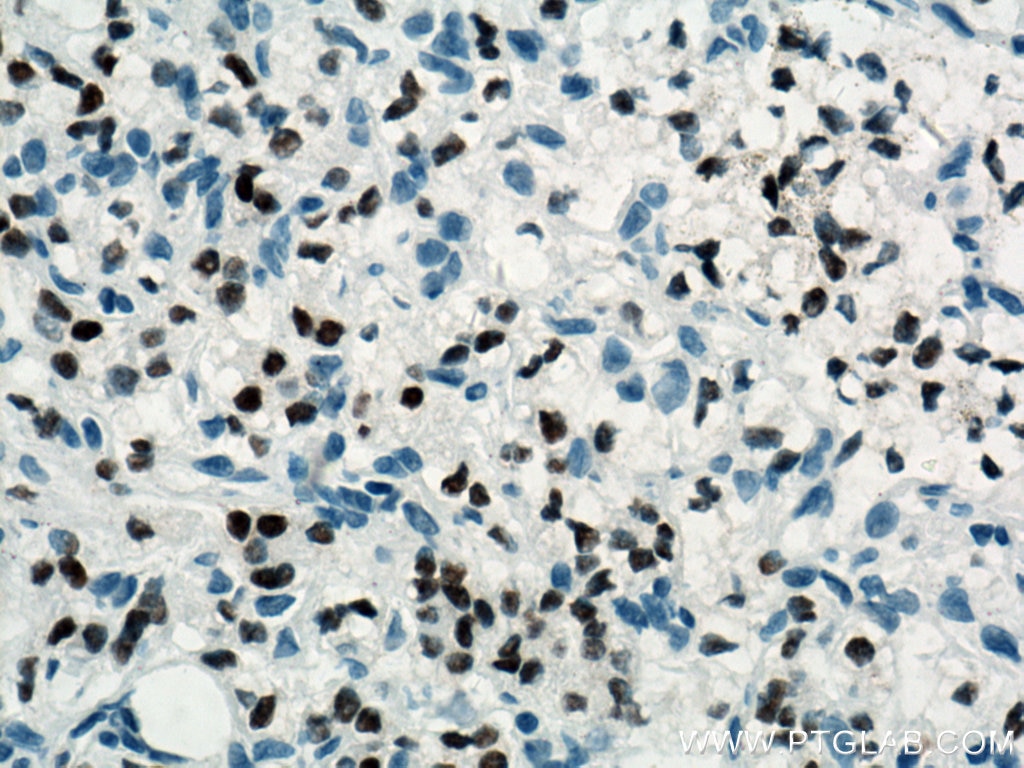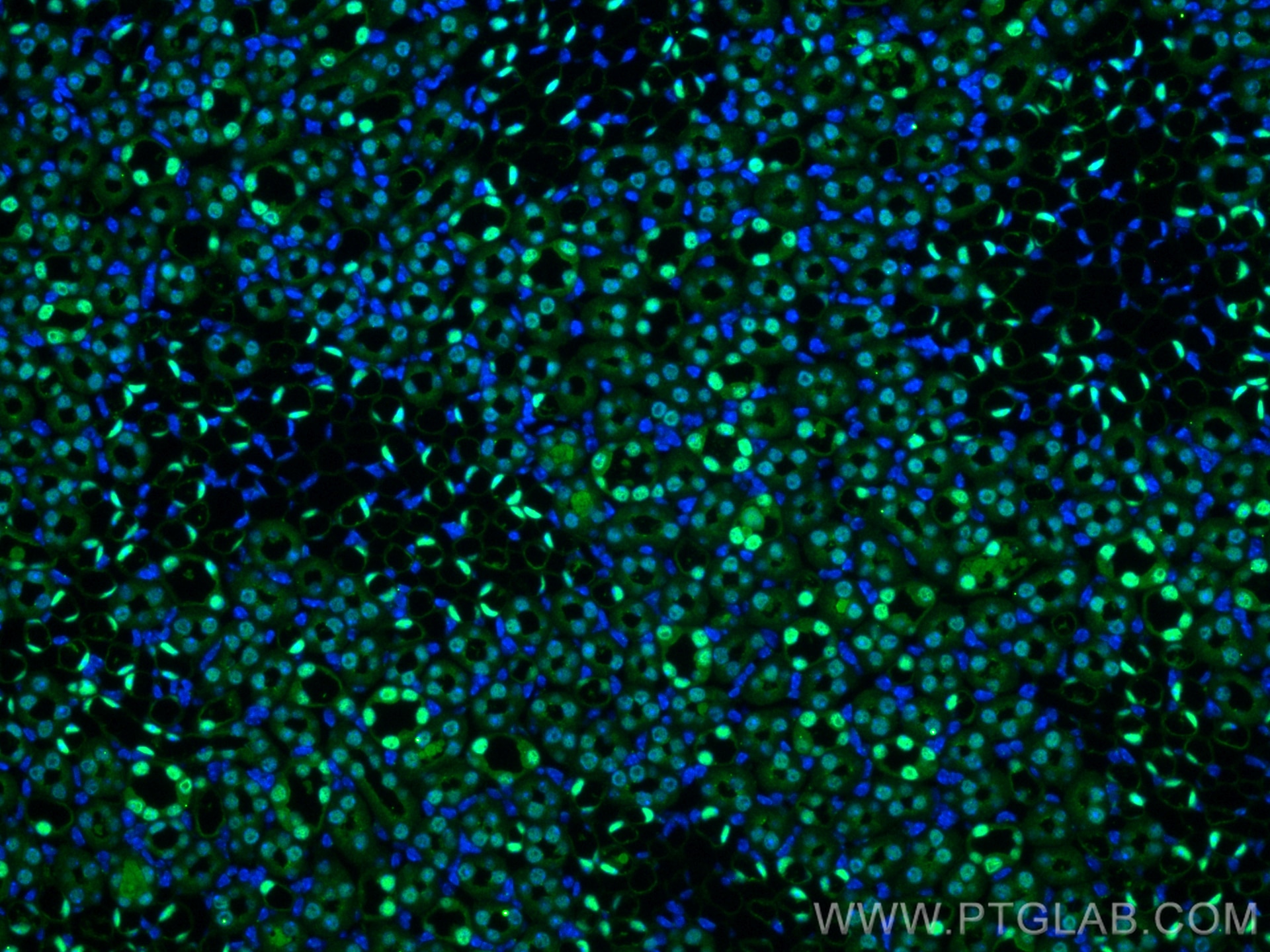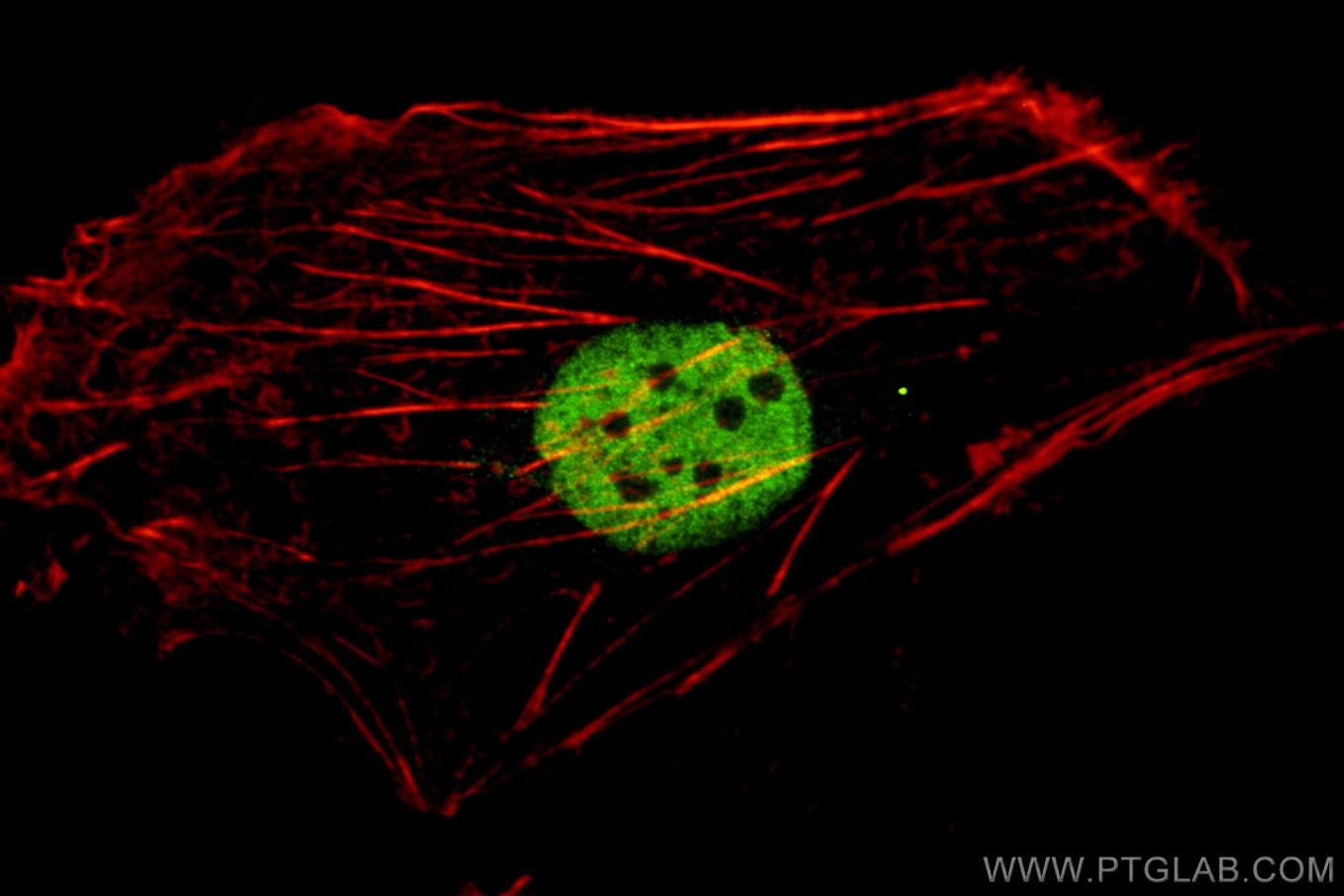Anticorps Monoclonal anti-PAX8
PAX8 Monoclonal Antibody for WB, IHC, IF/ICC, IF-P, ELISA
Hôte / Isotype
Mouse / IgG2b
Réactivité testée
Humain, rat, souris
Applications
WB, IHC, IF/ICC, IF-P, ELISA
Conjugaison
Non conjugué
CloneNo.
4H7B3
N° de cat : 60145-4-Ig
Synonymes
Galerie de données de validation
Applications testées
| Résultats positifs en WB | cellules SKOV-3, tissu de glande thyroïdienne humain |
| Résultats positifs en IHC | tissu de tumeur ovarienne humain, tissu d'amygdalite humain, tissu de cancer de la thyroïde humain, tissu rénal de rat, tissu rénal de souris il est suggéré de démasquer l'antigène avec un tampon de TE buffer pH 9.0; (*) À défaut, 'le démasquage de l'antigène peut être 'effectué avec un tampon citrate pH 6,0. |
| Résultats positifs en IF-P | tissu rénal de souris, |
| Résultats positifs en IF/ICC | cellules SKOV-3, |
Dilution recommandée
| Application | Dilution |
|---|---|
| Western Blot (WB) | WB : 1:1000-1:4000 |
| Immunohistochimie (IHC) | IHC : 1:5000-1:20000 |
| Immunofluorescence (IF)-P | IF-P : 1:200-1:800 |
| Immunofluorescence (IF)/ICC | IF/ICC : 1:50-1:500 |
| It is recommended that this reagent should be titrated in each testing system to obtain optimal results. | |
| Sample-dependent, check data in validation data gallery | |
Applications publiées
| WB | See 1 publications below |
| IHC | See 6 publications below |
| IF | See 3 publications below |
Informations sur le produit
60145-4-Ig cible PAX8 dans les applications de WB, IHC, IF/ICC, IF-P, ELISA et montre une réactivité avec des échantillons Humain, rat, souris
| Réactivité | Humain, rat, souris |
| Réactivité citée | Humain, souris |
| Hôte / Isotype | Mouse / IgG2b |
| Clonalité | Monoclonal |
| Type | Anticorps |
| Immunogène | PAX8 Protéine recombinante Ag0306 |
| Nom complet | paired box 8 |
| Masse moléculaire calculée | 48 kDa |
| Poids moléculaire observé | 48 kDa |
| Numéro d’acquisition GenBank | BC001060 |
| Symbole du gène | PAX8 |
| Identification du gène (NCBI) | 7849 |
| Conjugaison | Non conjugué |
| Forme | Liquide |
| Méthode de purification | Purification par protéine A |
| Tampon de stockage | PBS with 0.02% sodium azide and 50% glycerol |
| Conditions de stockage | Stocker à -20°C. Stable pendant un an après l'expédition. L'aliquotage n'est pas nécessaire pour le stockage à -20oC Les 20ul contiennent 0,1% de BSA. |
Informations générales
PAX8 is a member of the paired box (PAX) family of transcription factors, typically containing a paired box domain and a paired-type homeodomain. It is expressed during organogenesis of the thyroid gland, kidney and Mullerian system. It is thought to regulate the expression of Wilms tumor suppressor (WT1) gene and mutations in PAX8 have been associated with Wilms tumor cells, thyroid and ovarian carcinomas. PAX8 is a useful marker in distinguishing ovarian carcinomas from mammary carcinomas (PMID: 18724243). PAX8 is expressed in a high percentage of ovarian serous, endometrioid, and clear cell carcinomas, but only rarely in primary ovarian mucinous adenocarcinomas.
PAX8 has 5 isoforms with calculated MW 31kd, 34kd, 41kd, 43kd and 48kd. And there is a 60kd band corresponding to the electrophoretic mobility of PAX8 (PMID:15650356).
Protocole
| Product Specific Protocols | |
|---|---|
| WB protocol for PAX8 antibody 60145-4-Ig | Download protocol |
| IHC protocol for PAX8 antibody 60145-4-Ig | Download protocol |
| IF protocol for PAX8 antibody 60145-4-Ig | Download protocol |
| Standard Protocols | |
|---|---|
| Click here to view our Standard Protocols |
Publications
| Species | Application | Title |
|---|---|---|
Dev Cell Identification of a core transcriptional program driving the human renal mesenchymal-to-epithelial transition | ||
Mod Pathol Xp11.2 translocation renal cell carcinoma with NONO-TFE3 gene fusion: morphology, prognosis, and potential pitfall in detecting TFE3 gene rearrangement. | ||
Stem Cell Res Ther Genetic correction of induced pluripotent stem cells from a DFNA36 patient results in morphologic and functional recovery of derived hair cell-like cells | ||
Front Cell Dev Biol Lgr4 Regulates Oviductal Epithelial Secretion Through the WNT Signaling Pathway | ||
Hum Pathol Clinicopathological and Molecular Characterization of Biphasic Hyalinizing Psammomatous Renal Cell Carcinoma (BHP RCC): Further Support for the Newly Proposed Entity. |
Avis
The reviews below have been submitted by verified Proteintech customers who received an incentive for providing their feedback.
FH Kenzo (Verified Customer) (03-28-2024) | It worked well for immunolabeling in mouse retina tissues
|
FH Juan (Verified Customer) (04-18-2019) | It works well in Western Blot experiment.
|
